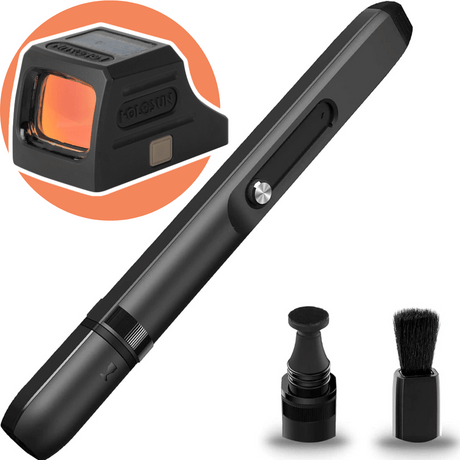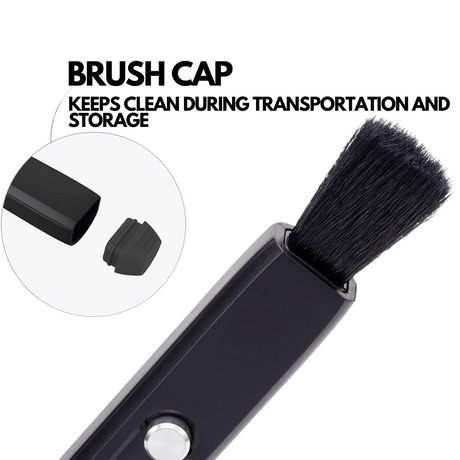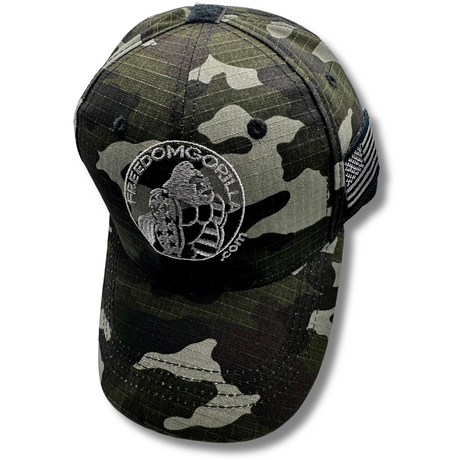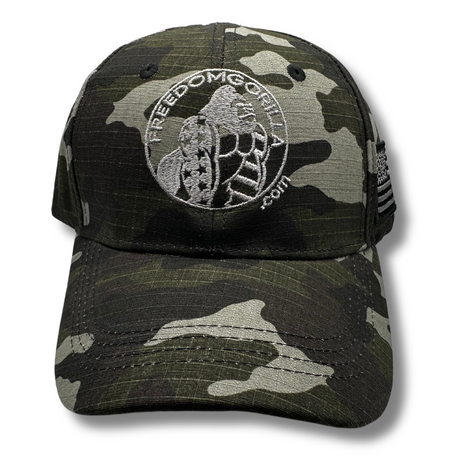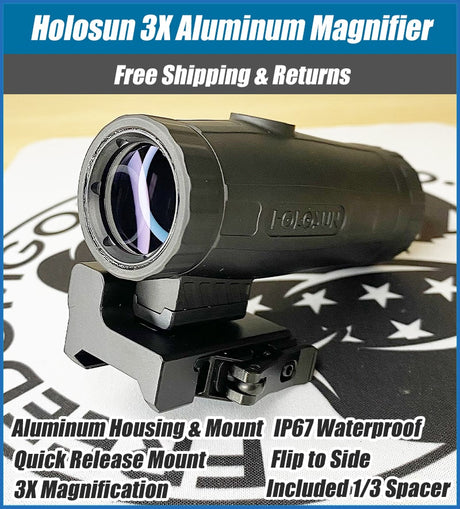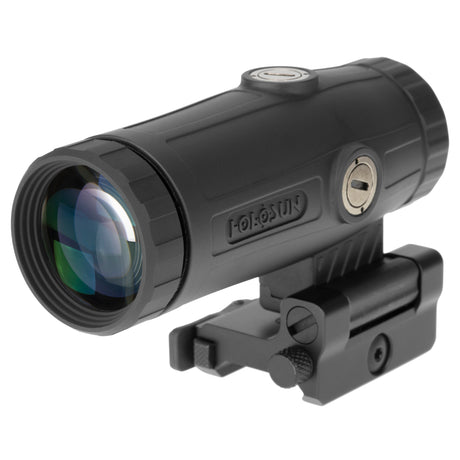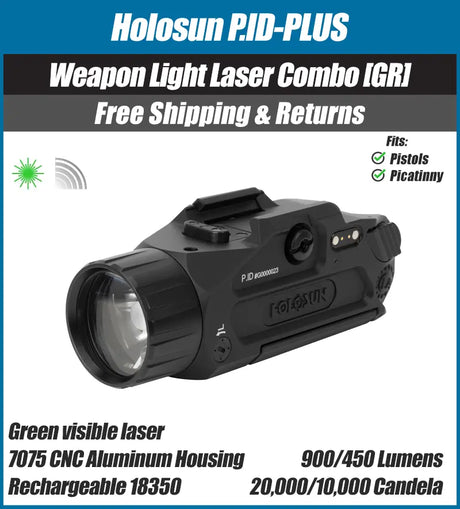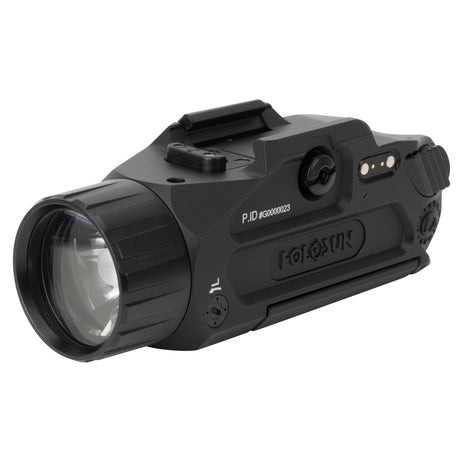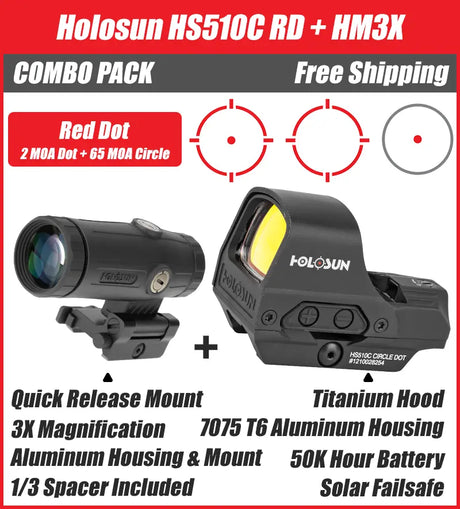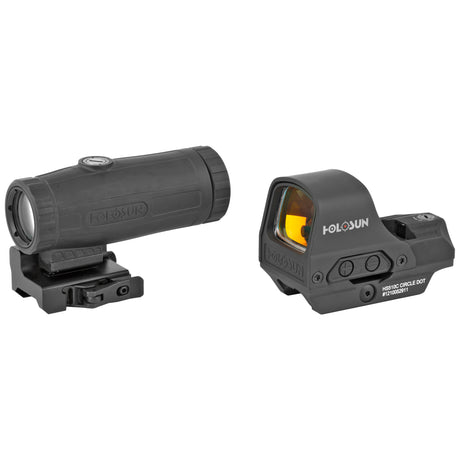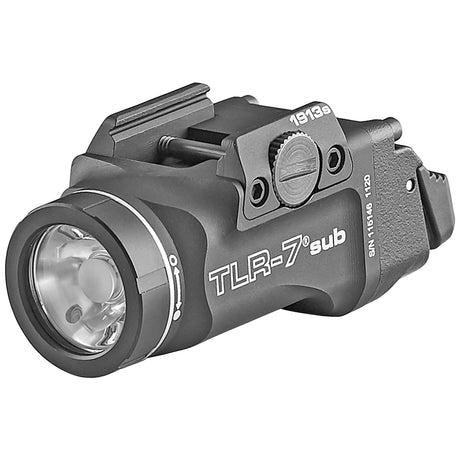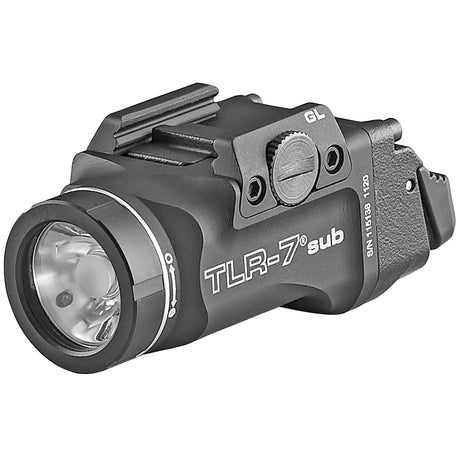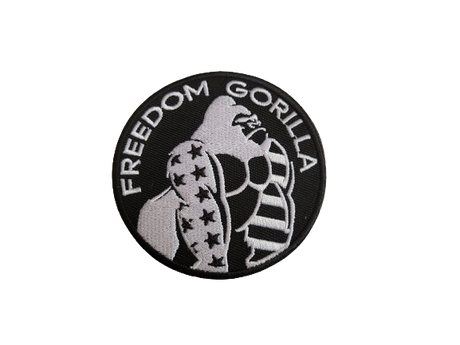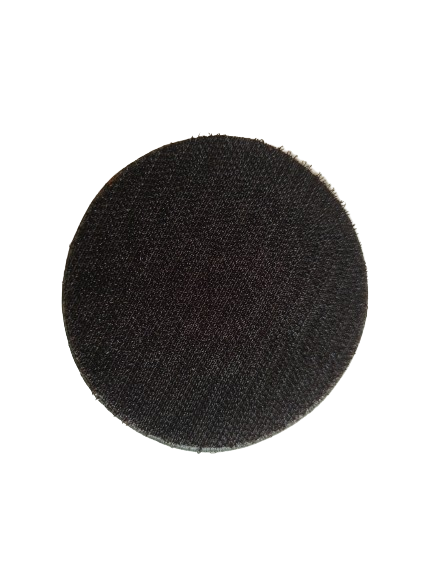Hey Freedom Gorillas, today we are delving into some Trijicon sights, more specifically we want to pin the Trijicon RMR HD vs. RCR. These two optics are designed to be durable and perfect for duty use, but let’s discuss their main specs, similarities, and differences to see which one is the right choice for you:
TLDR
The RMR HD and RCR are both Trijicon’s latest RMR Footprint pistol optics and both are American made.
The Trijicon RCR is an enclosed emitter, and is one of the most durable enclosed emitters on the market due to its patented housing. It also mounts directly to any RMR footprint slide; one of the only ones in the market to do this. The RCR has a manual mode only, has nightvision compatibility, only comes in 3.25 MOA, and comes in black only. It’s intended for those that need the toughest enclosed emitter on the market and want legendary American-made Trijicon reliability
The Trijicon RMR HD is an open emitter and has auto and manual brightness as well as more brightness settings than the RCR. The RCR has only manual brightness. The RMR HD has a MRS reticle with a 55 MOA circle and your choice of a 1 MOA center dot or 3.25 MOA center dot. The RCR is dot only and only comes with a 3.25 MOA center dot.
Both the RMR HD and RCR are waterproof at up to a depth of 66ft. Both use a top loading battery so the battery can be replaced while the optics are mounted, and the RCR has a longer expected battery life.
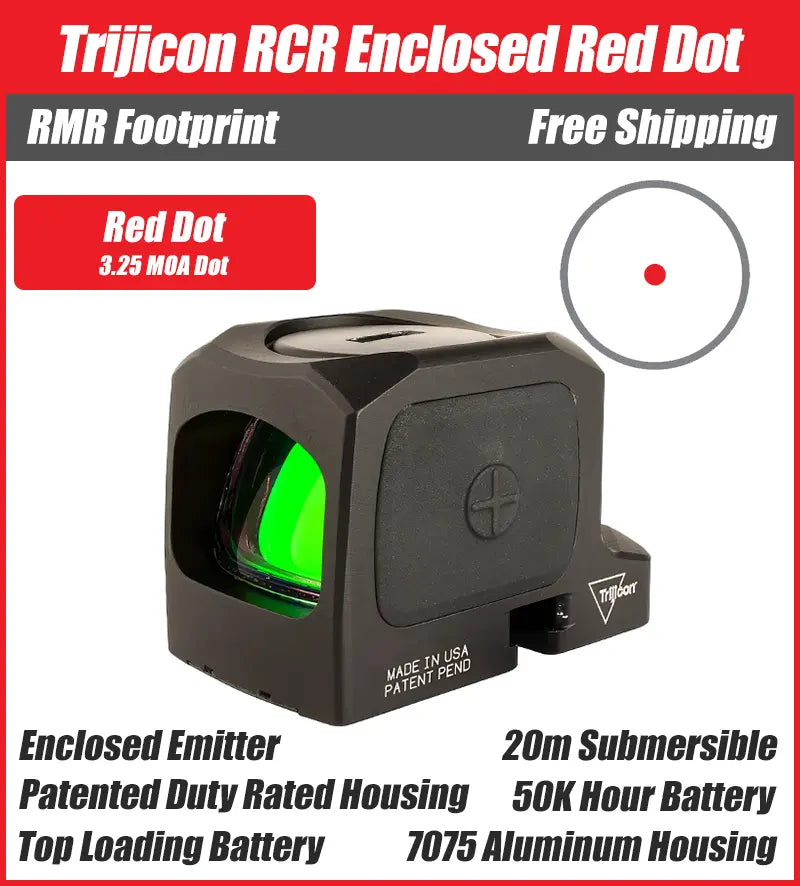
|

|
Trijicon RCR Main SpecsThe Trijicon RCR, or Ruggedized Closed Reflex, was developed as an enclosed version of the RMR. Here are its main specifications:
|
Trijicon RMR HD Main SpecsThe Trijicon RMR HD came after the RMR SRO and merges many of the features of the RMR and SRO, and adds some features of its own. Here are the main specifications for the RMR HD:
|
To understand how the RMR HD improved upon the original design, see our Trijicon RMR vs RMR HD comparison.
Composition and Material
Let’s begin with the overall design of the optics. In terms of material, the RCR and RMR HD are made of the same 7075-T6 aluminum, which makes them light and durable. Both also use Trijicon’s true-color, multi-coated lens for minimal color shift and optimal light transmission. Both optics are also submersible in up to 20 meters (66 feet) of water and are durable.
![]()
Open Vs. Closed Emitter
The most obvious difference you will see with the Trijicon RMR HD vs. RCR is the build and shape. The RMR HD is an open emitter while the RCR is an enclosed emitter and looks more like a box. Since the RCR is an enclosed emitter, it won’t allow rain, snow, mud, dirt, lint, or dust to obstruct the LED emitter that an open emitter like the RMR HD can be prone to.
The other physical difference you will notice is that the RMR HD has owl ears to improve durability and an indexing ridge. This ridge helps you find your dot when going to line up your sights. The RCR has a square shape with no owl ears and doesn’t have the indexing ridge. Because the housing of the RCR is larger than the RMR HD, the side buttons are also larger.
Finally, the RMR HD has a slight front overhang that seems to be more cosmetic than practical. The front overhangs the footprint slightly and many users have pointed out that it can slightly cover their ejection port.
Mounting
![]()
Both the RMR HD and RCR are designed to fit standard RMR compatible footprints and so can fit the same pistols. The main difference is that the RCR uses new screws for mounting called Capstan Screws.
Where the RMR HD’s screws are installed and adjusted from the top, the Capstan screws are installed and adjusted from the side and are designed to prevent over torquing, cross threading, and stripping.
Reticle System

In terms of reticle system, both the RMR HD and the RCR only come with a red reticle option. The RMR HD has a MRS, or multi reticle system, which allows the user to switch between dot only, circle only, or both circle and dot. The RCR only has a reticle dot.
The RMR HD is available with a 1 MOA dot with a 55 MOA circle or a 3.25 MOA dot with 55 MOA circle. The RCR is only available with a 3.25 MOA dot, so the RMR HD has slightly more options and also more versatility when it comes to its reticle system.
Battery and Battery Life
Both the RCR and RMR HD use a CR2032 battery and have the battery accessible from the top of the optic. The main difference is that the RMR HD comes with a special tool to access the battery since its position is slightly awkward. The RCR just requires a flathead for access to its battery and it is easier to access.
Battery Life
In terms of battery life, Trijicon says that at the right conditions and settings, the RCR has over 6 years of continuous battery use. The RMR HD has over 3 years of continuous use. Something to keep in mind is that the RMR HD’s battery life is shorter because it uses the multi-reticle system, which can put more demands on the battery than the dot-only system of the RCR.
Brightness Settings
The brightness settings for the Trijicon RMR HD vs. RCR is similar; the RMR HD has 9 brightness settings, 3 of which are night vision compatible and 1 is a super bright setting. The RCR has 10 brightness settings, 3 are night vision compatible and 1 is a super bright setting.
Automatic Brightness Modes
The RMR HD also has three different auto modes: normal auto, high auto, and low auto, and the RMR HD has a forward facing light sensor so it doesn’t auto adjust based on just ambient light, but based on the direction you are pointing the optic. The RCR doesn’t have an auto mode that adjusts based on ambient light since it is enclosed and doesn’t have a sensor.
Button Lock Out
Both the RMR HD and RCR have a button lock out feature that prevents accidental button presses from changing brightness. The RCR can only be locked to manual mode while the RMR HD can be locked to manual or auto mode.
Which One Do I Buy?
When it comes to the Trijicon RMR HD vs. RCR, which one is right for you? This all comes down to personal preference so in this section we want to highlight the pricing, similarities, and differences to help you decide which optic is the one for you.
Price
When looking at the price of the Trijicon RMR HD vs. RCR, you’ll see that the RCR, even though an enclosed sight, is still more affordable than the RMR HD. Here is the price breakdown:
Trijicon RMR HD
- Trijicon RMR HD 1 MOA Dot: $774.00
- Trijicon RMR HD 3.25 MOA Dot: $774.00
Trijicon RCR:
- Trijicon RCR 3.5 MOA Dot: $685.00
Similarities
- Both optics come with a red reticle
- Both have 3 night vision compatible brightness settings and 1 super bright setting.
- Both are made with 7075-T6 Aluminum
- Both use true-color, multi-coated lenses
- Both have manual- and auto-brightness settings
- Both can fit any RMR mount or footprint
Differences
- RCR is bulkier that the RMR HD
- The RCR is more affordable than the RMR HD
- The RCR has larger buttons than the RMR HD
- The Trijicon RCR mounts with Capstand screws while the RMR HD mounts with regular screws
- The RMR HD has 9 brightness settings and the RCR has 10 brightness settings
- RCR is an enclosed emitter where the RMR HD is an open emitter
- The Trijicon RCR has a 3.25 MOA Dot while the RMR HD has a MRS with a 55 MOA circle and your choice of a 1 MOA dot or 3.25 MOA dot.
- The RMR HD has a forward facing light sensor and the RCR doesn’t.
- Because it’s an enclosed emitter, the RCR can be more reliable in harsh weather
- The RMR HD has a front overhang that can cover the ejection port.
- The RMR HD has owl ears and an index ridge.
- The RMR HD has an auto- and manual-brightness mode while the RCR only has manual brightness

|

|
Conclusion
Hopefully, you have found this comparison article helpful at deciding whether the Trijicon RMR HD or Trijicon RCR is right for you.
As you can see the biggest differences are that the RCR is an enclosed emitter while the RMR HD is open. This makes the RCR bulkier and potentially more reliable due to protecting the LED emitter against solids like dust and dirt.
The RMR HD also has more options when it comes to brightness options with auto and manual modes, and uses a forward facing light sensor for automatic adjustments. The RCR only has a manual mode, but has 10 brightness settings compared to the RMR HD’s 9 brightness settings.
The RMR HD has a MRS with 55 MOA circle and your choice of 1 MOA dot or 3.25 MOA dot while the RCR only comes with a 3.25 MOA dot. The battery life on the RCR is longer than the RMR by 3 years of continuous use.
Both use the same battery, are made of the same material, only come in black, and have a red reticle option. For those comparing Trijicon to other manufacturers, our Trijicon RMR vs Holosun 407C, 507C, 508T, 509T, EPS guide examines alternative options across different price points.
If you have any questions, please contact us and we would be happy to help.
Thanks for reading!


